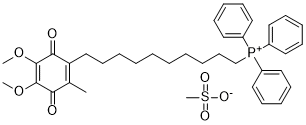While the interpretation of toxicity assessments based on biomarkers must consider the particular sensitivity or tolerance of the organisms used, it is generally held that the small size of microorganisms make them particularly exposed to toxins and thus sensitive indicators of the substances’ general toxicity. Moreover, while single species tests can be strongly biased by the properties of the particular strains included and must be supplemented by a battery of tests of different organisms before their effects can be generalized, assessing whole bacterial communities are more robust in principle: it takes advantage of the naturally highly diverse bacterial communities to provide a continuous toxicity response that is a powerful tool to accurately establish the general propensity of a substance to be toxic. Bacterial growth was universally inhibited by moss additions irrespective of cyanobacterial presence or activity, as shown by the clear dose-response relationship that could be established for all tested mosses. This validated that we could assess the toxicity of moss. We hypothesized that moss toxicity, as indicated by the propensity of mosses to inhibit bacterial growth, would increase with higher numbers of cyanobacteria present. What we found was that cyanobacteria did not contribute at all to the toxicity of moss to bacteria. We cannot rule out a higher susceptibility of the other major decomposer group, fungi, to the toxic potential of mosses. However, in a thorough assessment of the abundance of fungi in relation to a previously reported N2-fixation gradient across fire chronosequence in boreal forests in Northern Sweden, we found no differences in fungal presence. It might be reasonable to suppose that bacteria should be more susceptible than fungi to toxins based on their  higher area per volume. However, the fungal role in the decomposition of mosses, and the fungal susceptibility to moss toxicity, still remains to be studied. That moss can inhibit bacterial growth is not surprising, and probably is partly related to the inhibitory nature of constitutional plant compounds, such as phenols, which have a known inhibitory effect on microorganisms. Further, it is possible that phenol content could have been instrumental for much of the toxicity that moss exerted on bacteria in general, since moss from all six sites could effectively suppress bacterial growth at high concentrations. However, moss phenol content could not be used to explain differences in the inhibition of bacterial growth with regard to presence of cyanobacteria, as phenol concentrations in moss samples did not correlate with cyanobacterial colonization or with moss toxicity. Moreover, toxins produced by cyanobacteria are not exclusively phenolic, rather the majority are alkaloids and cyclic peptides. Addition of N can result in an inhibition of microbial activity, making the tissue concentration of N a putative confounding factor in our analysis. However, we find no differences in the N content of mosses with high AbMole Acetylcorynoline compared to low N2 fixation rate, effectively falsifying this as an alternative explanation for the inhibition of bacterial growth. The obtained results on the variation of moss toxicity are of a negative nature, lending no support to our hypothesis stating that cyanobacteria contribute to the toxicity of moss. However, rather than no relationship, we have a suggestion for a higher toxic effect by mosses that was correlated with lower cyanobacteria numbers and activity. Could these results be used to guide our understanding of the hitherto elusive ecology of mosscyanobacteria relations? A range of observations from previous experiments and field investigations could be combined with our here reported results to develop a way forward to address this.
higher area per volume. However, the fungal role in the decomposition of mosses, and the fungal susceptibility to moss toxicity, still remains to be studied. That moss can inhibit bacterial growth is not surprising, and probably is partly related to the inhibitory nature of constitutional plant compounds, such as phenols, which have a known inhibitory effect on microorganisms. Further, it is possible that phenol content could have been instrumental for much of the toxicity that moss exerted on bacteria in general, since moss from all six sites could effectively suppress bacterial growth at high concentrations. However, moss phenol content could not be used to explain differences in the inhibition of bacterial growth with regard to presence of cyanobacteria, as phenol concentrations in moss samples did not correlate with cyanobacterial colonization or with moss toxicity. Moreover, toxins produced by cyanobacteria are not exclusively phenolic, rather the majority are alkaloids and cyclic peptides. Addition of N can result in an inhibition of microbial activity, making the tissue concentration of N a putative confounding factor in our analysis. However, we find no differences in the N content of mosses with high AbMole Acetylcorynoline compared to low N2 fixation rate, effectively falsifying this as an alternative explanation for the inhibition of bacterial growth. The obtained results on the variation of moss toxicity are of a negative nature, lending no support to our hypothesis stating that cyanobacteria contribute to the toxicity of moss. However, rather than no relationship, we have a suggestion for a higher toxic effect by mosses that was correlated with lower cyanobacteria numbers and activity. Could these results be used to guide our understanding of the hitherto elusive ecology of mosscyanobacteria relations? A range of observations from previous experiments and field investigations could be combined with our here reported results to develop a way forward to address this.